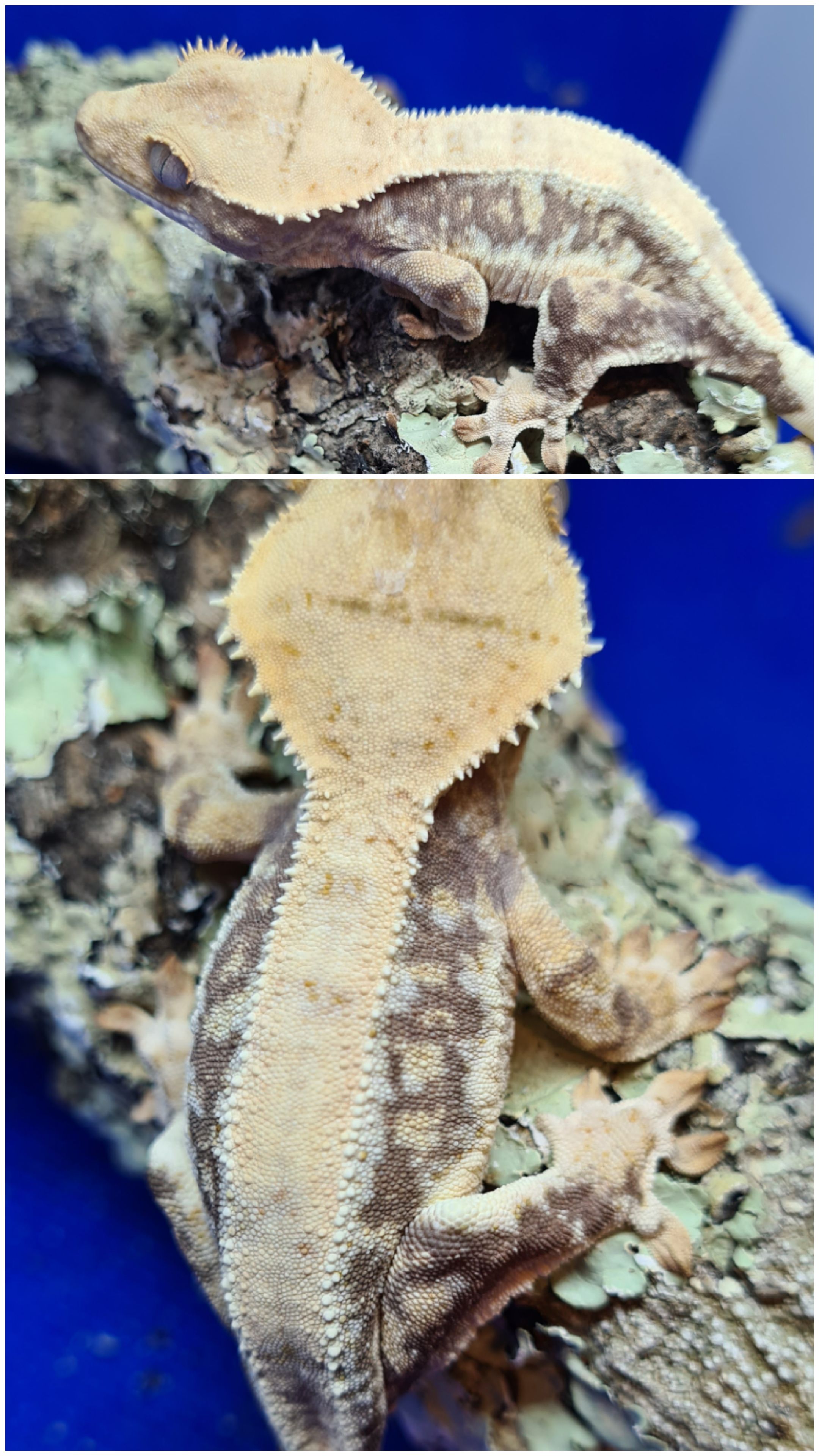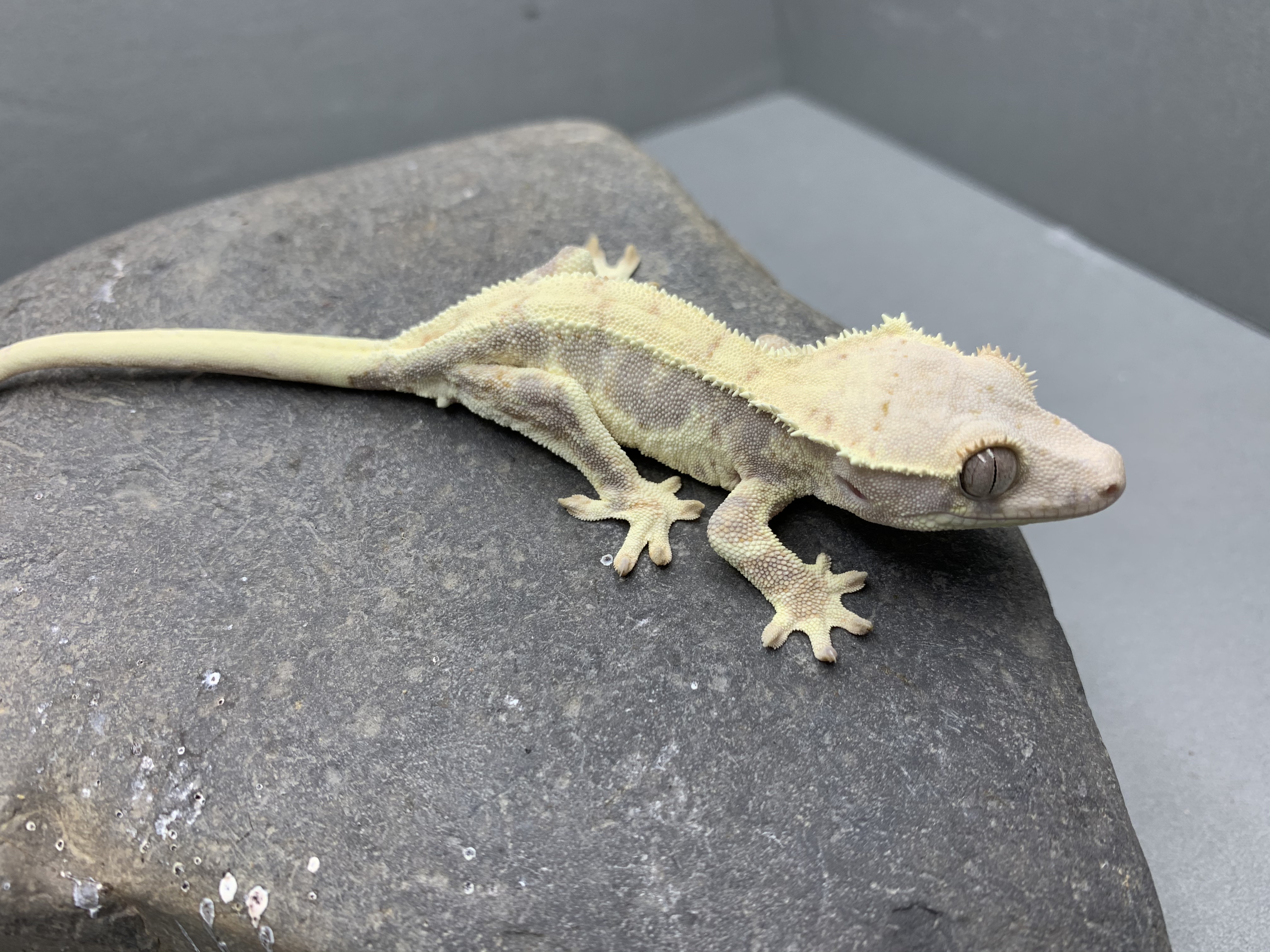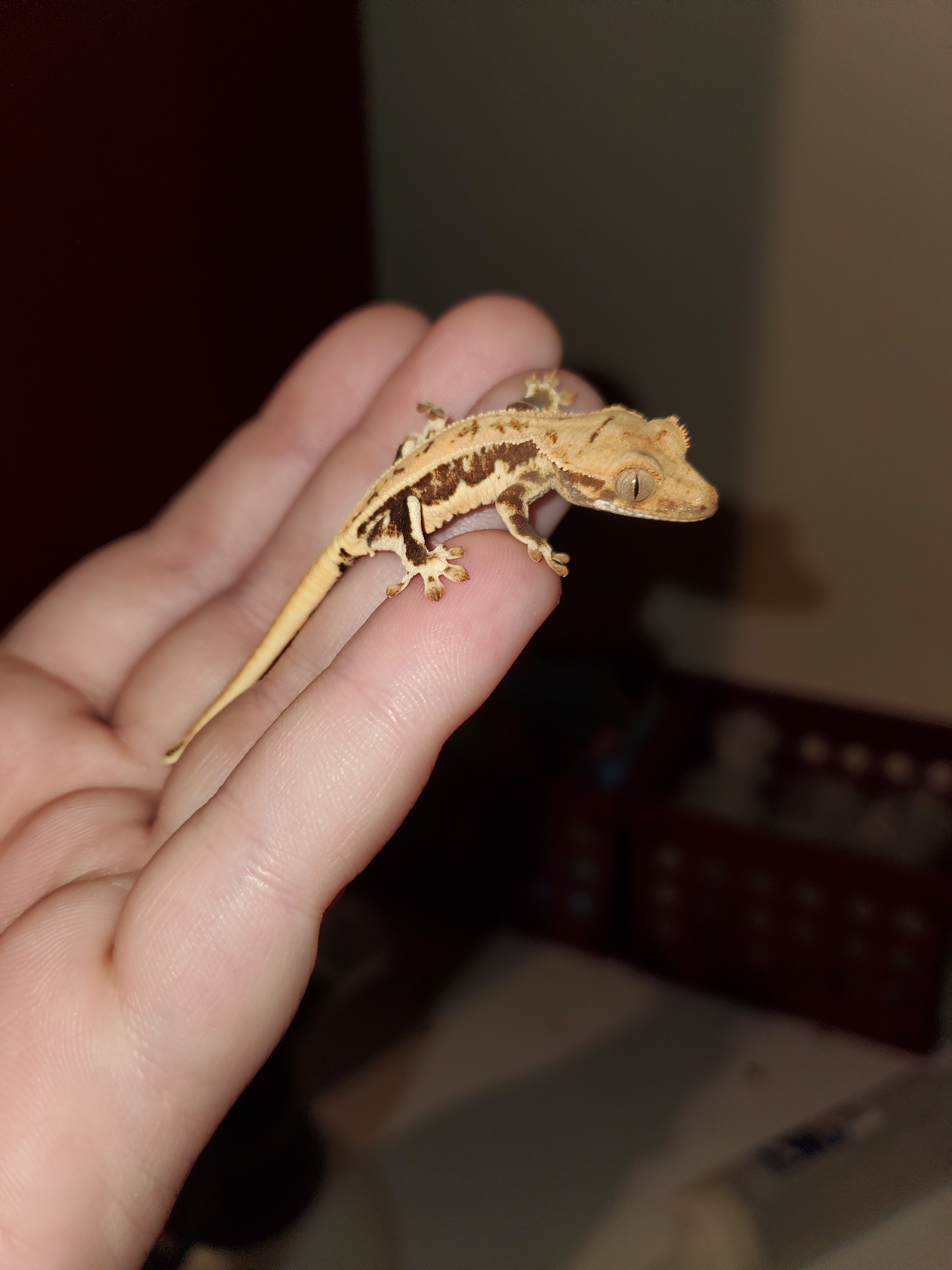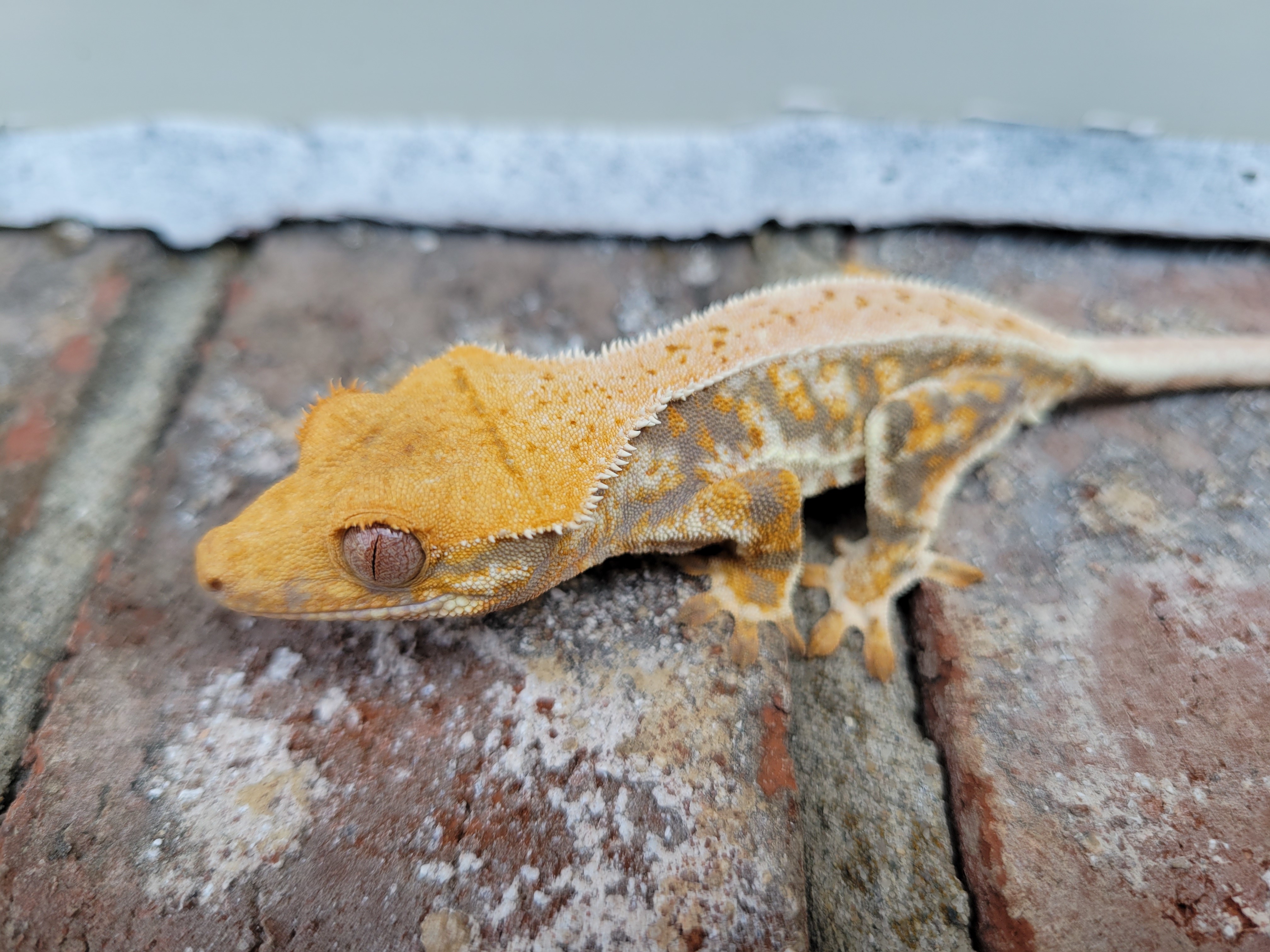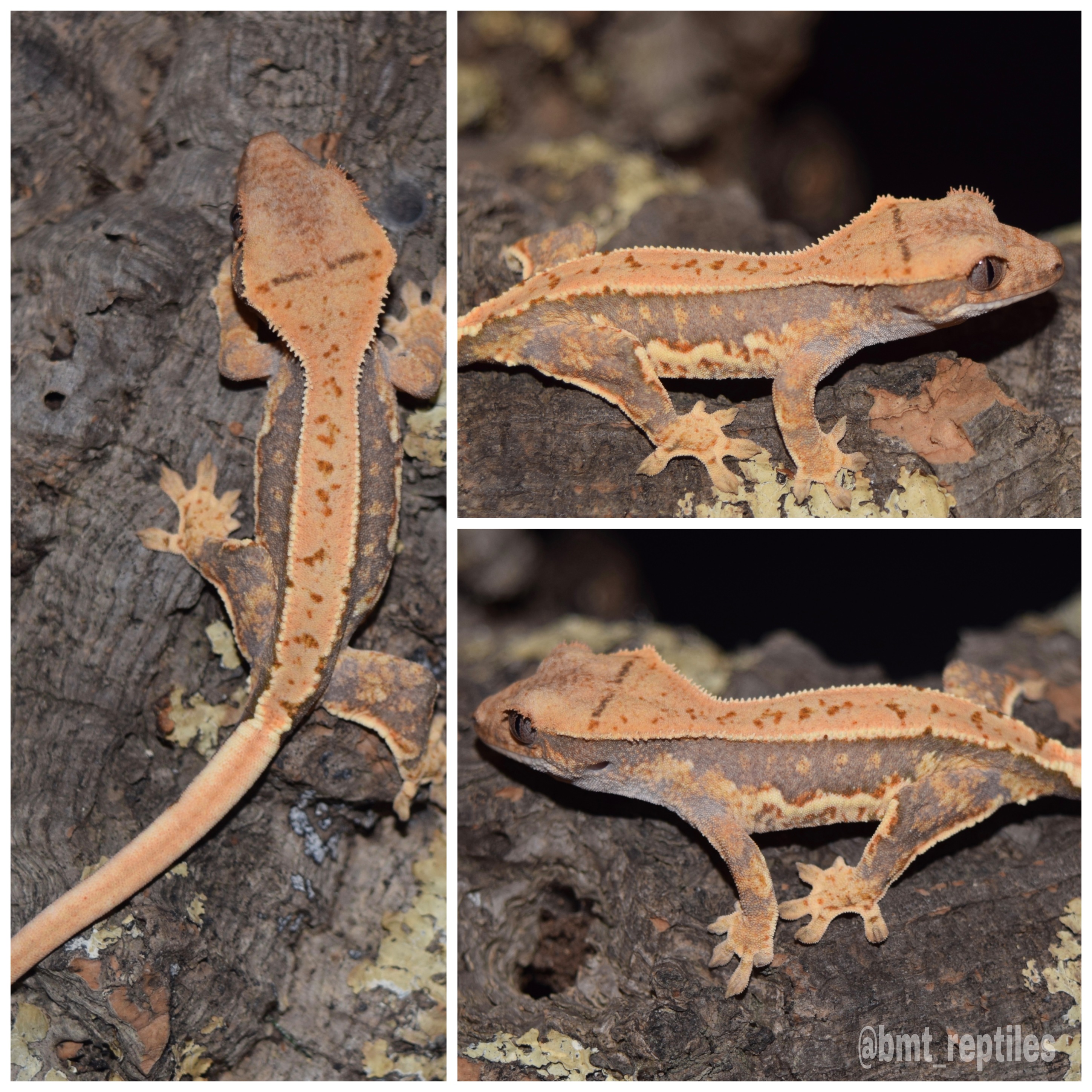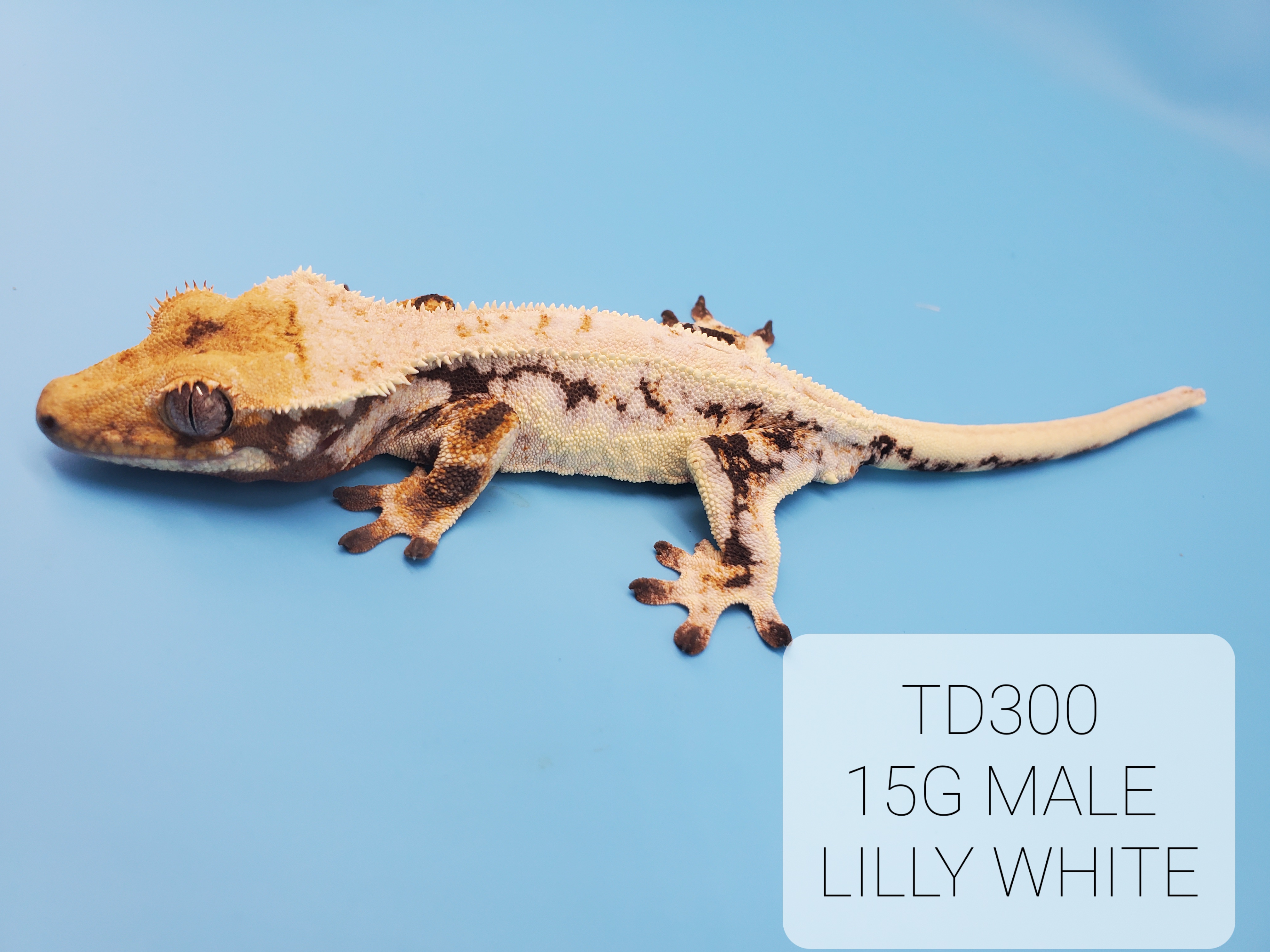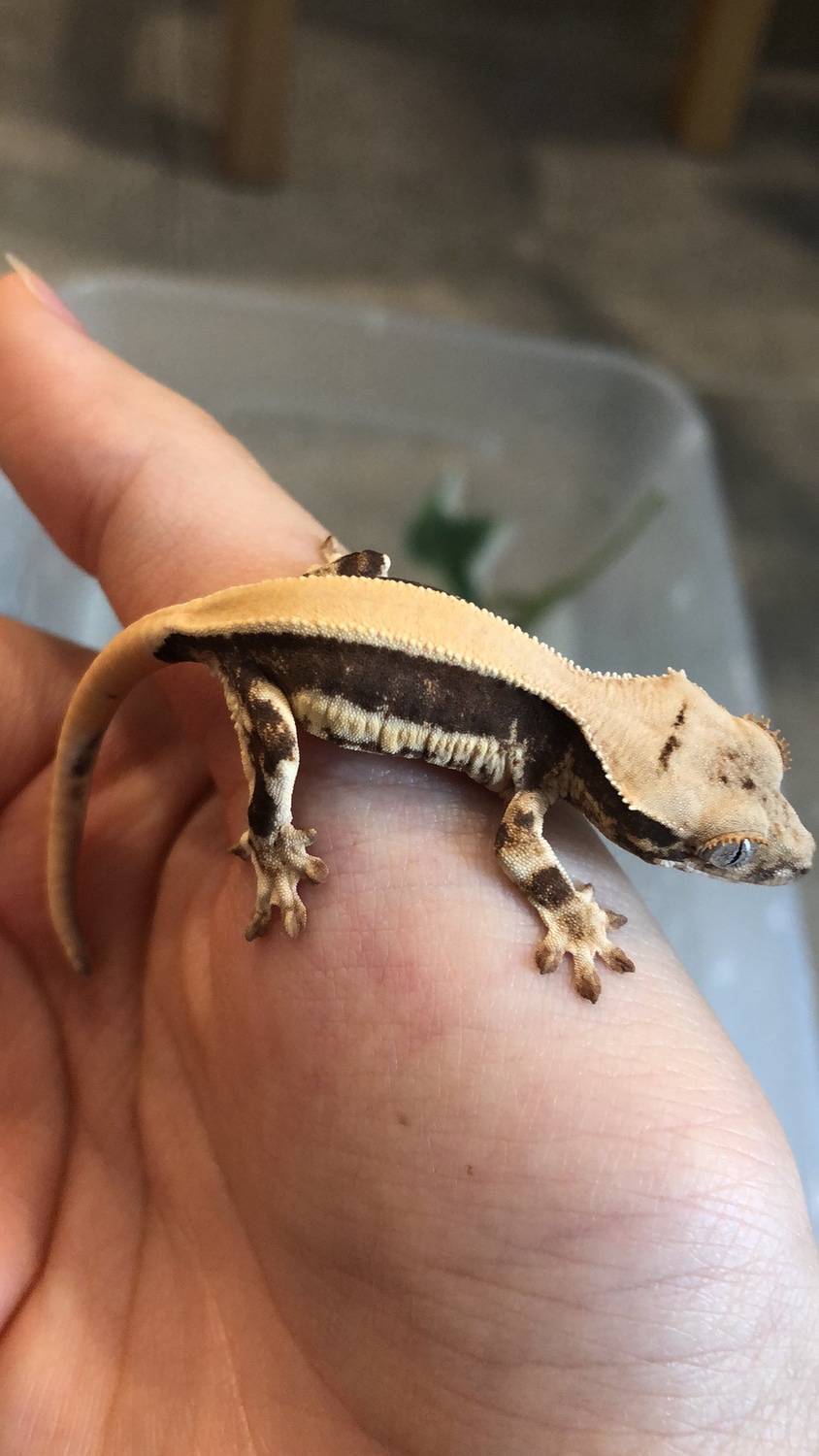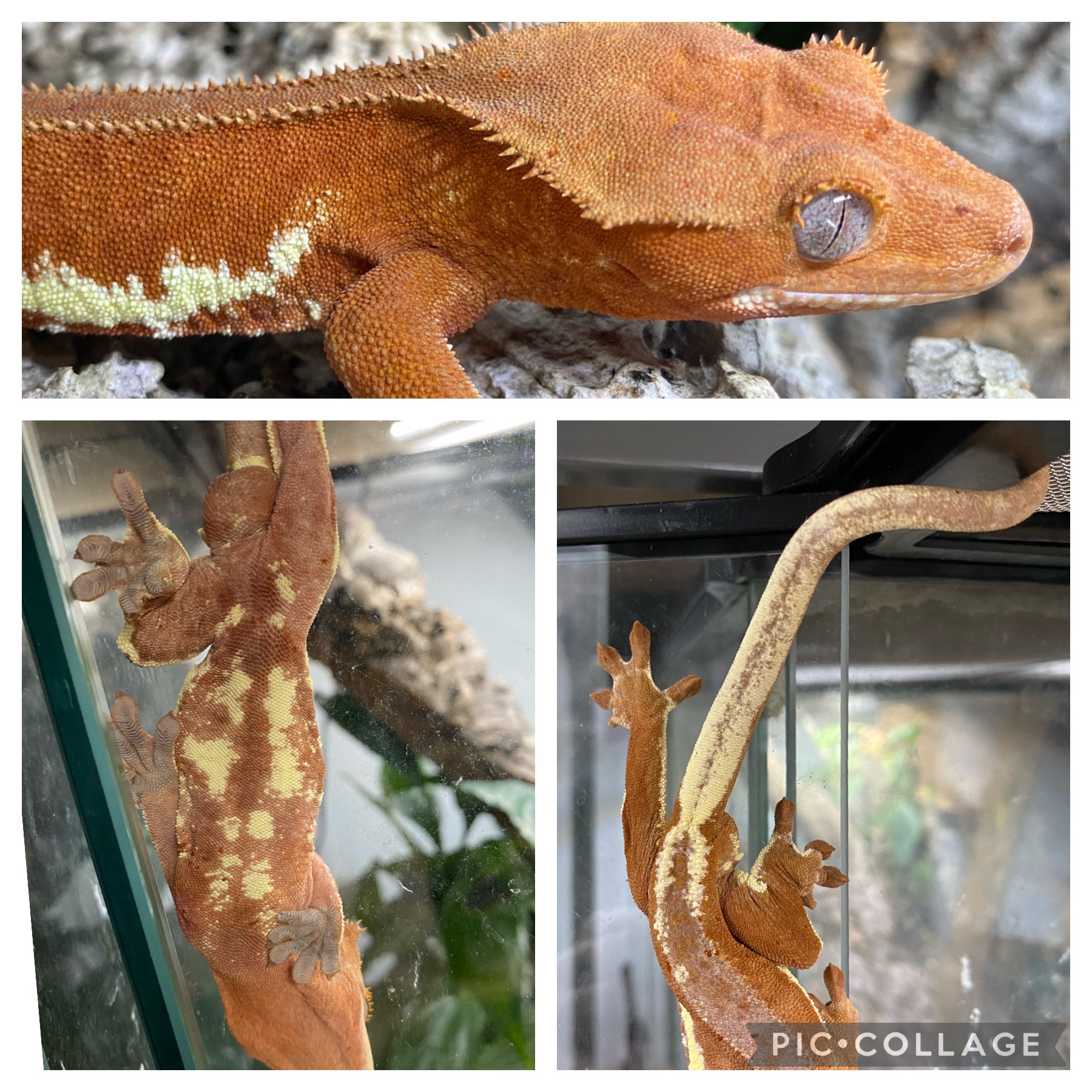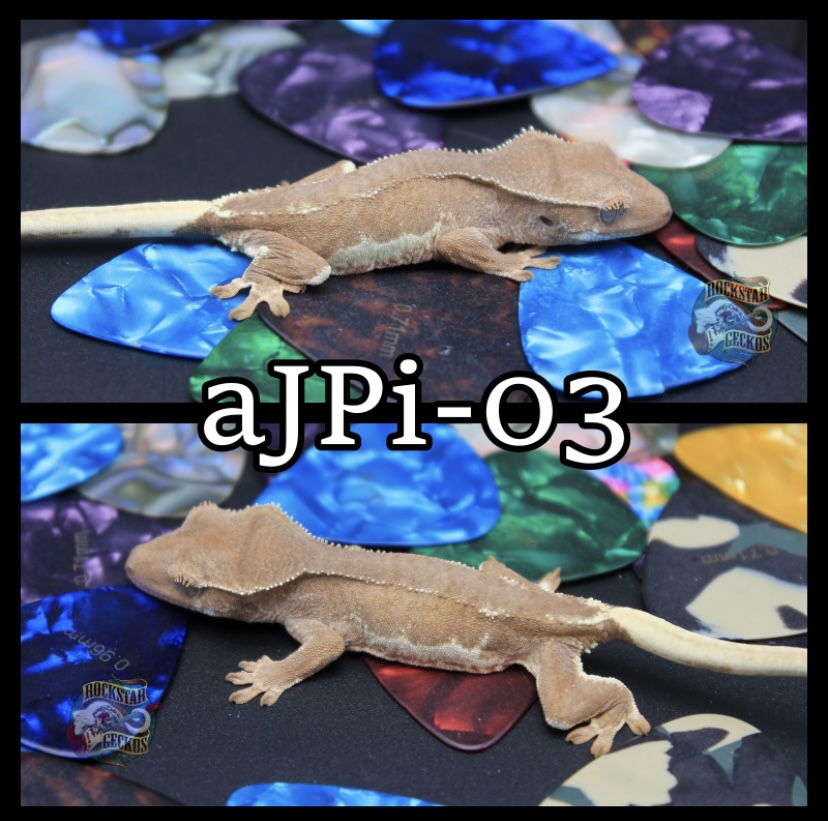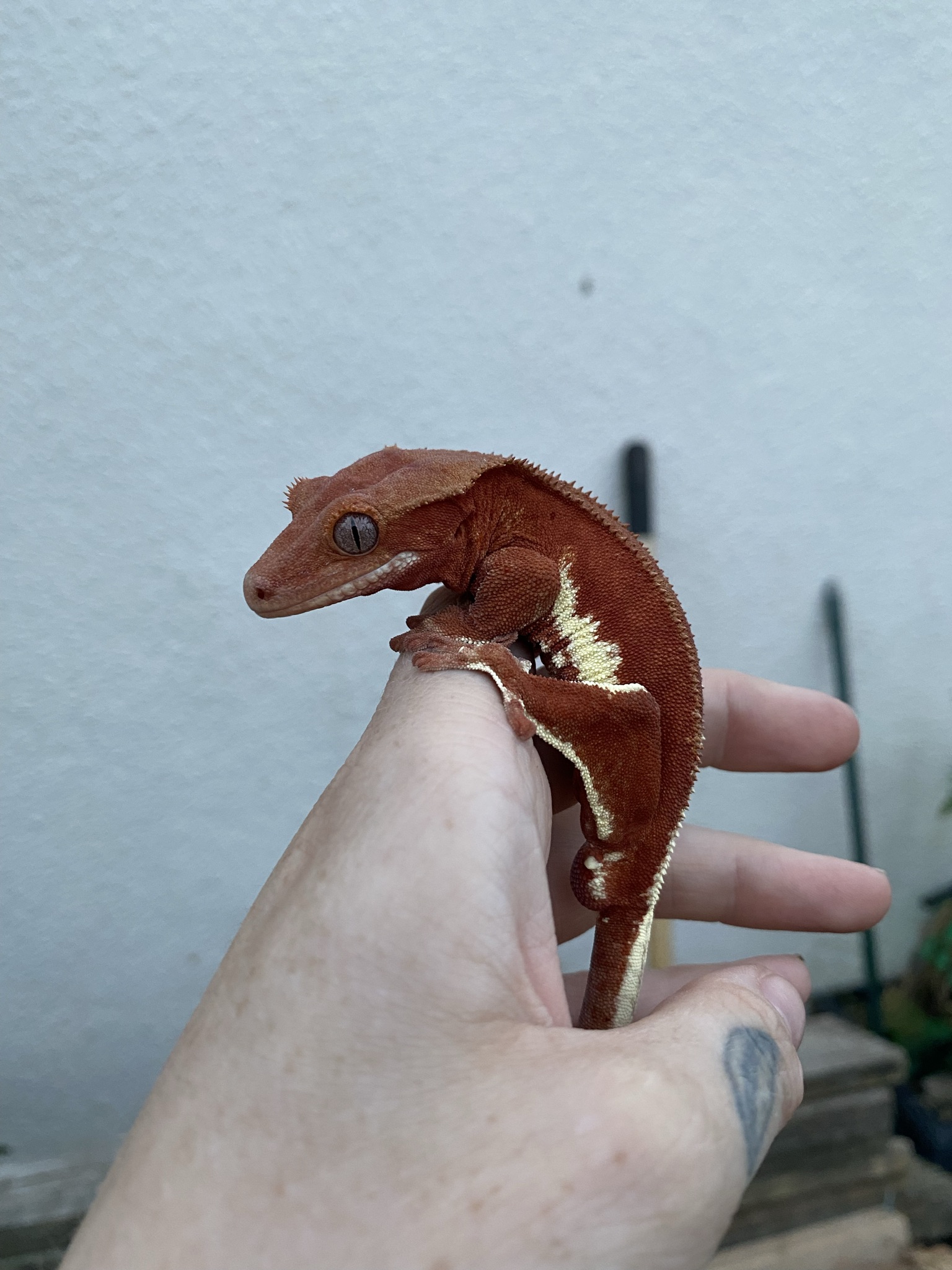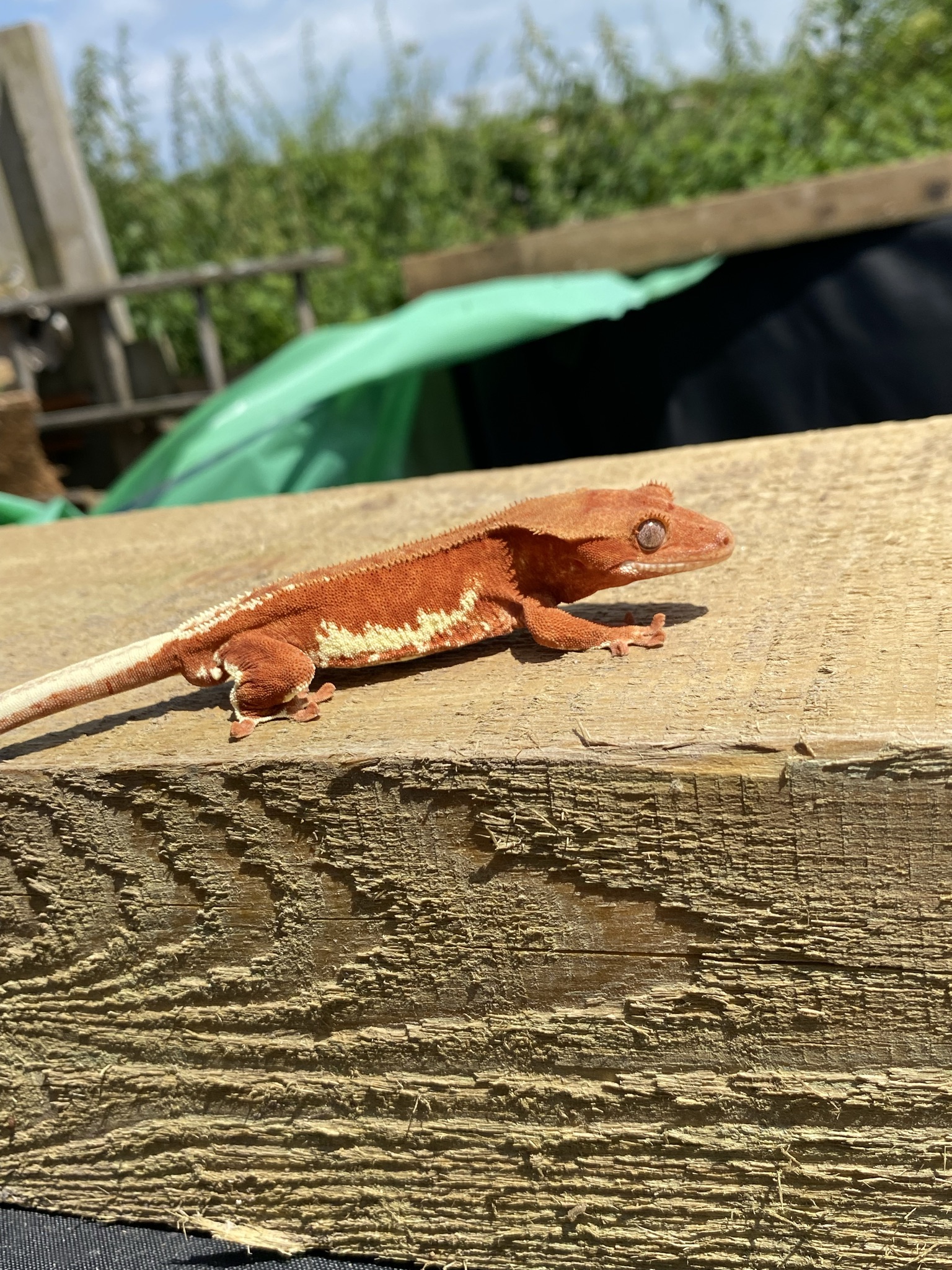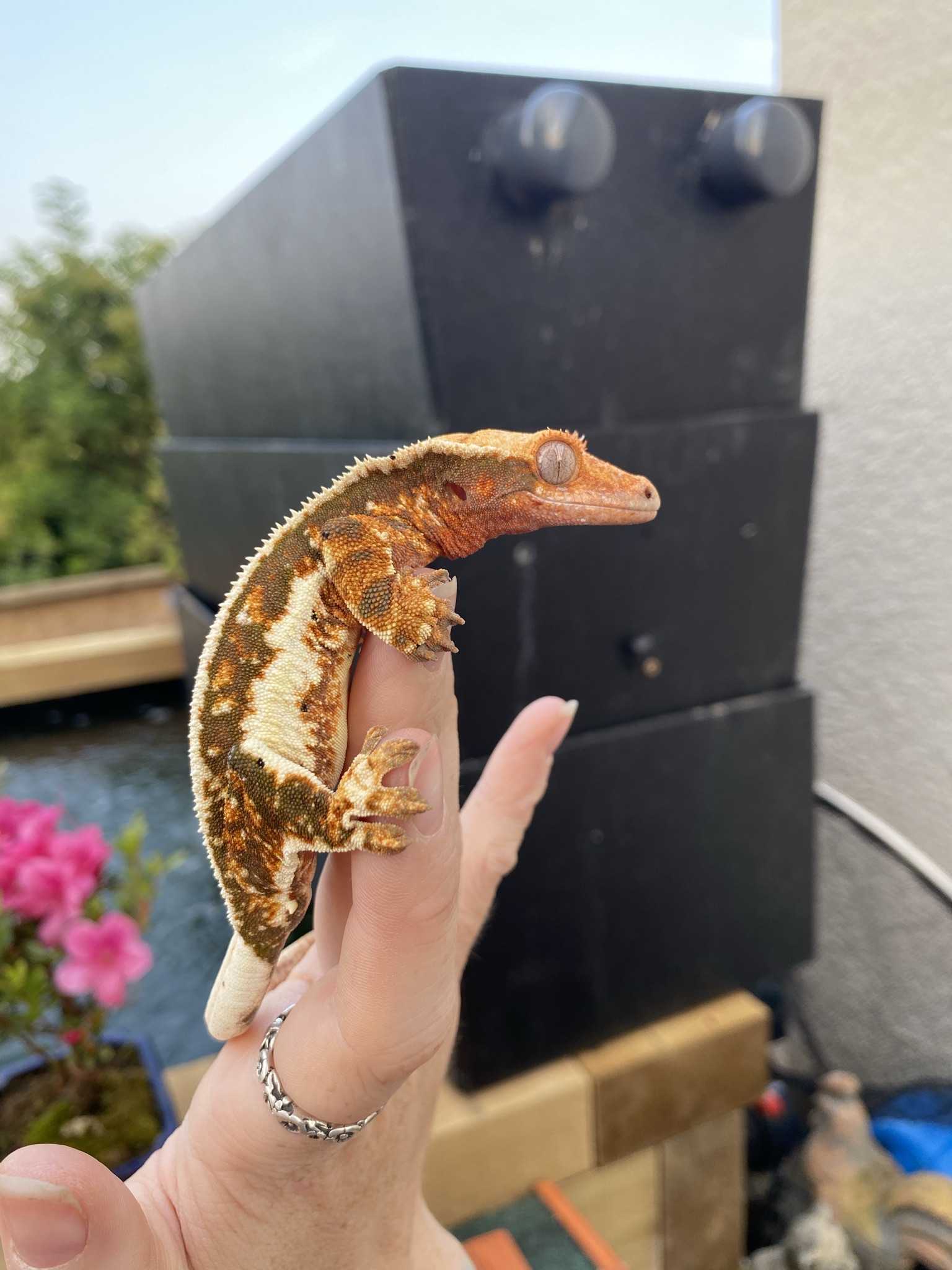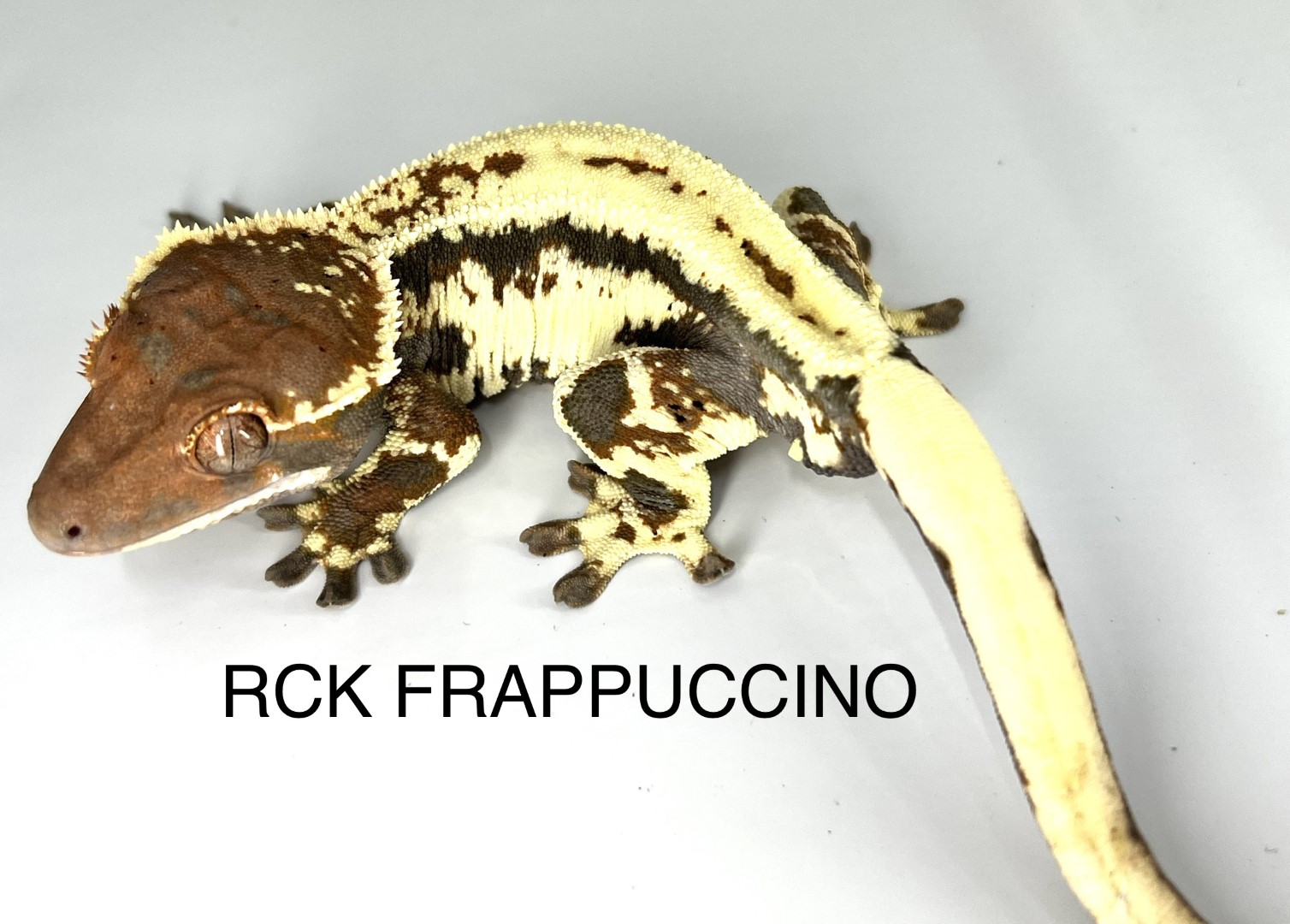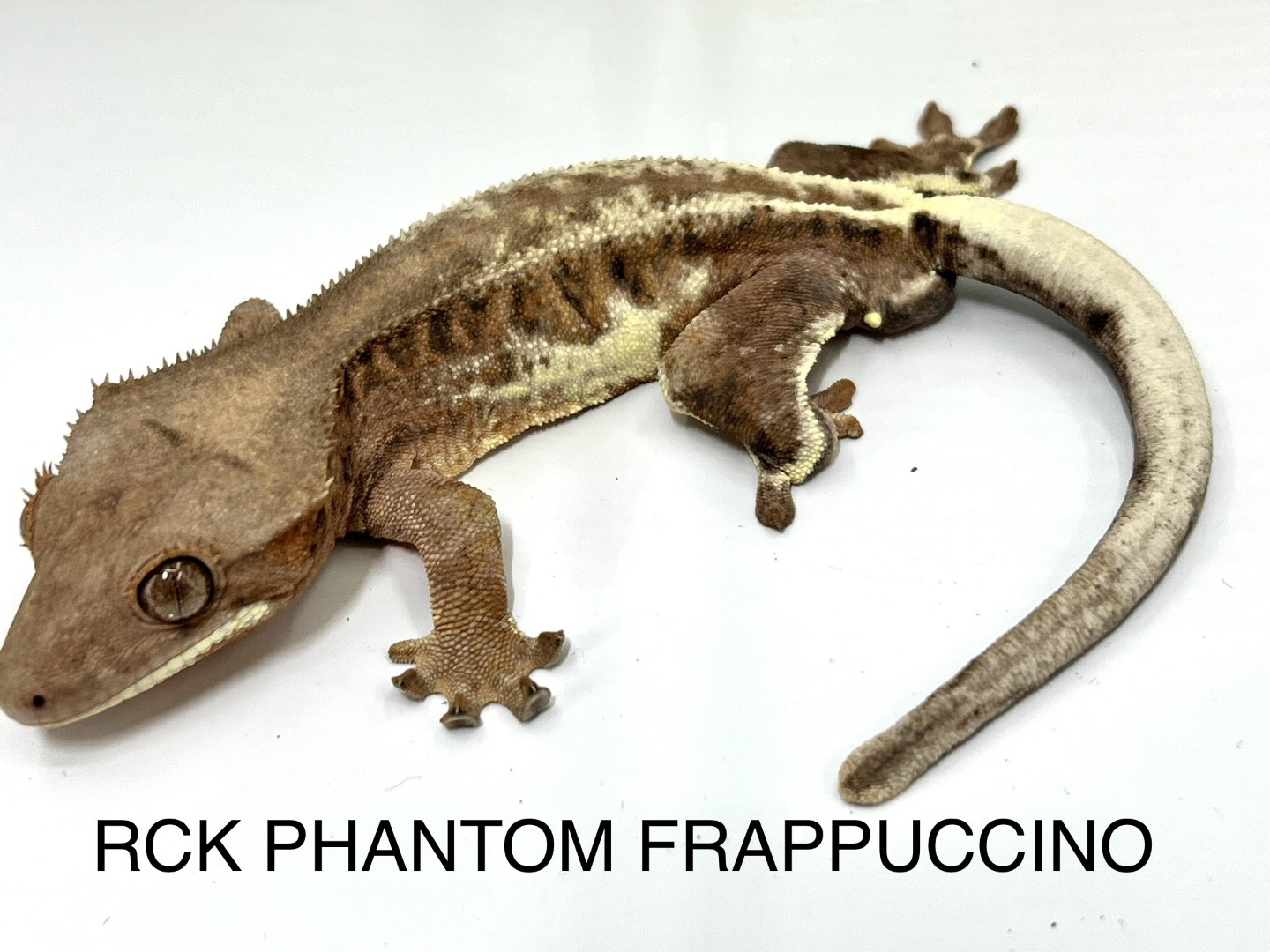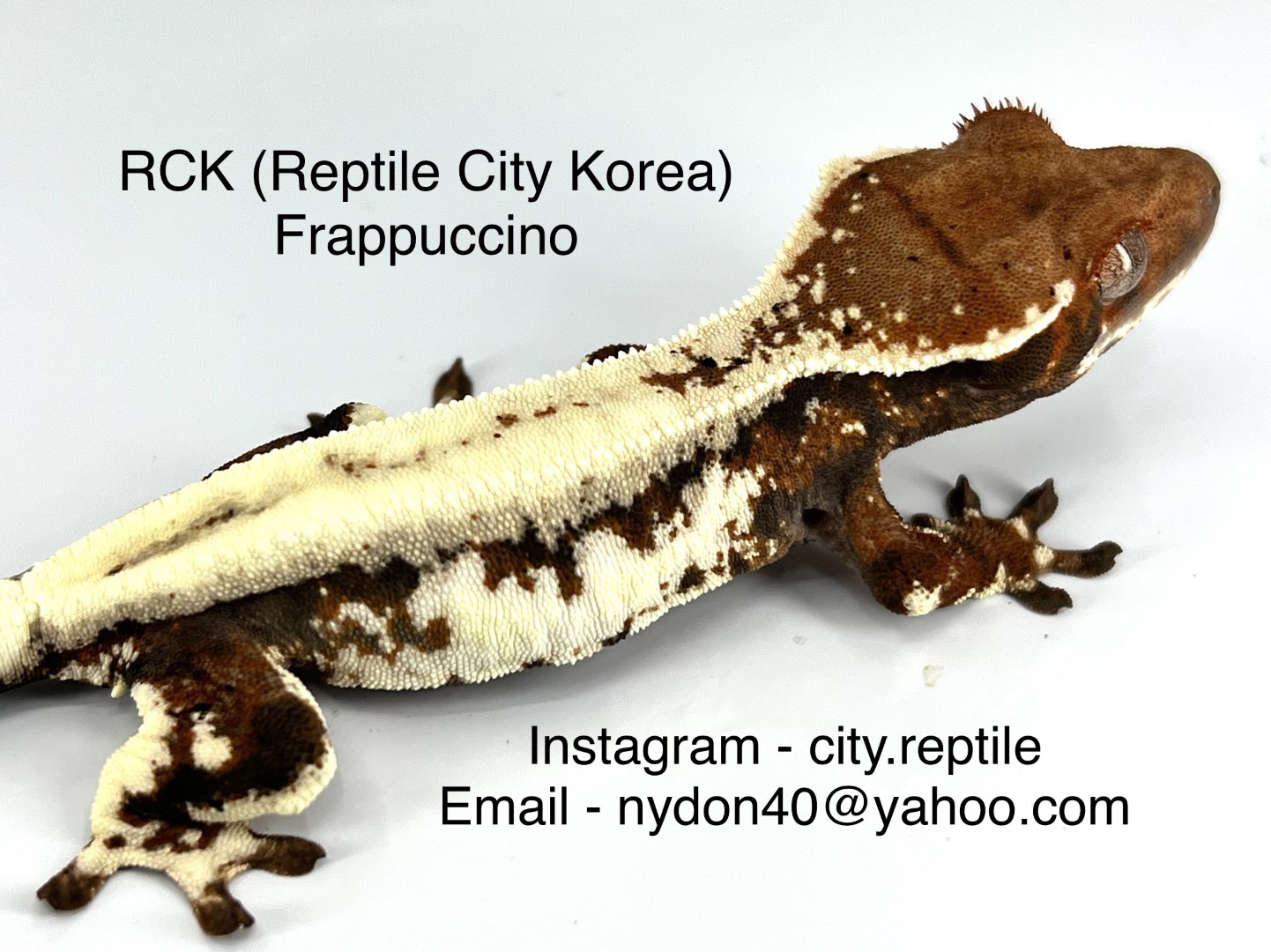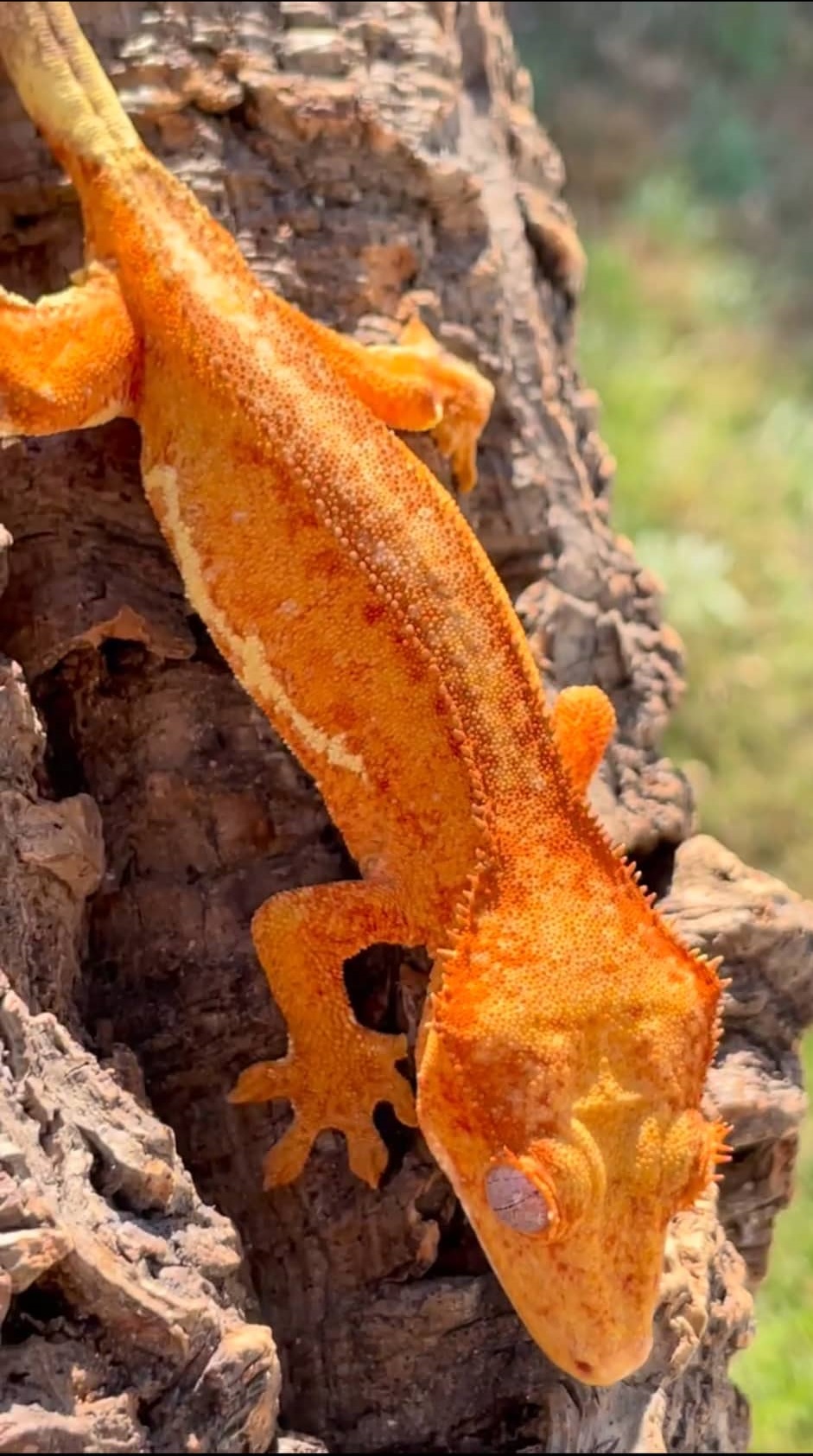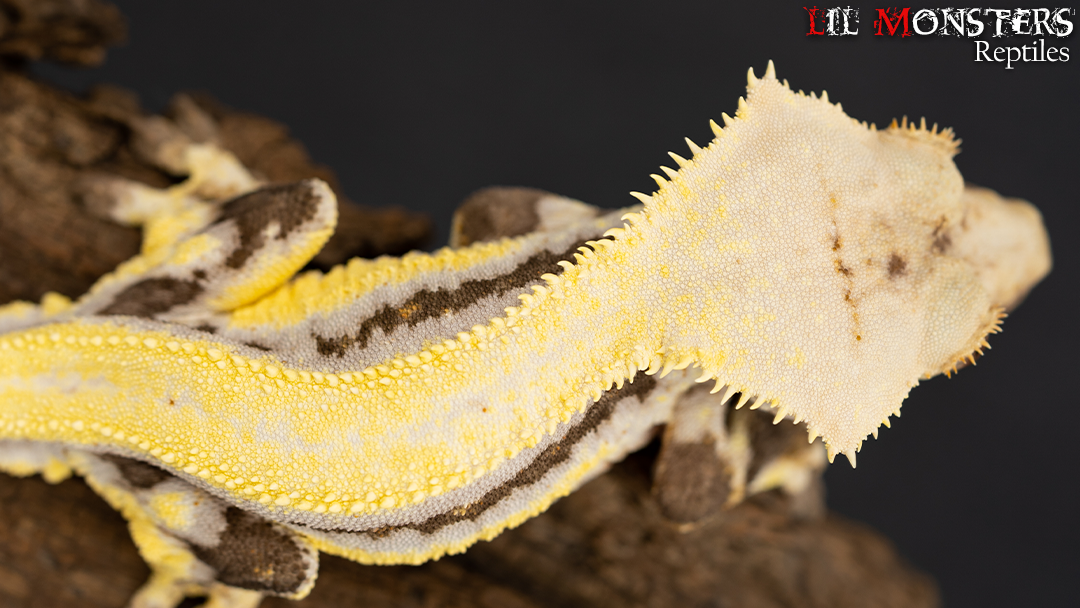Lilly White
Type: Incomplete Dominant
Aliases: Genotype L
Issues: Lethal Super
Availability: Common
Last Updated: 2022-12-21
Do you have any suggestions or corrections for this article?
Click here to contribute feedback
About
A Lilly White crested gecko is a high white crested gecko. The tail will be solid white from the base to the tip with no breakage when looking at the tail from a top view and the eyes will be a silvery grey colour.
Baby Lilly White crested geckos are likely to appear less white along the dorsal and laterals with a yellowish or orange colour that fades with age, however they should still have a solid white tail. The underneath of the tail can show pattern and colour but it will not cross over to the top half of the tail. The tip of the tail may have a slightly different colour or even slight grey colouring but it will not create a pattern that you see in non-Lilly White geckos.
Lilly White crested geckos will have white/cream colouring along the belly. You will be able to see the white/cream colouring from underneath your gecko up to the lower laterals. This is likely to spread as the gecko ages. The white/creamy colour along the lower lateral with show slightly raised compared to the base of the gecko…
You will notice that the Lilly White crested geckos skin is a softer with a more velvet like feel to the touch than most non-Lilly White geckos.
Lilly Whites geckos are not usually bred to other Lilly Whites geckos due to high fatality in the off-spring. However, pairing a Lilly White to a non-Lilly White gecko should result in Lilly White and non-Lilly White offspring.
Issues
Lilly Whites geckos are not usually bred to other Lilly Whites geckos due to high fatality in the off-spring. However, pairing a Lilly White to a non-Lilly White gecko should result in Lilly White and non-Lilly White offspring.
Lilly white is an incomplete dominant trait. This means that it produces a mixed phenotype with the wild-type allele where the two genes sit. It is not codominant. Lilly white came after all the contributors had already proved many traits and their genetic inheritance. The lilly white gene proved to be an excellent tool to use to affirm working theories. Being that we can make lilly versions of all the phenotypes in the hobby it helps confirm the work within this document.
The lilly white gene is a leucistic gene and the Hzg form has proven to be lethal, producing animals that struggle to breathe, have trouble with motor skills, and fail to eat. For the many that have been produced, they usually only live a couple of days to one week. This is likely due to how extreme the reduction in melanin is in this morph and the physiology of crested geckos. Leucism has been known to cause issues in other species and has similarly led to death. Melanin has been found in organs of several species and, although not completely clear to science what the exact function of melanin is in these parts of the body, some speculate that it facilitates organ development and function. Although a purely white animal is a highly sought-after phenotype, the super lilly form is highly discouraged.
History
Lilly white is one of the first recognized gene variants to occur within the captive-bred population. The breeder who founded this trait was Lilly Exotics.
In late 2010, we randomly hatched out an incredible gecko – a pinstripe-looking animal but with stunning white/cream colouring. It was completely different to anything we had hatched before, or had seen elsewhere and was obviously going to be a keeper.
As luck would have it, our little ‘Lilly White’ baby turned out to be a male. In 2012, we bred him to three young virgin adult females and soon we were in possession of several pearly white eggs.
Fast forward a couple of months and the very first egg to hatch was a replica of the father, suggesting the trait was genetic. The second egg that hatched was normal looking as were the third, and the fourth. Then hatched another Lilly White.
Over the course of a few months it became clear that around half of the offspring were Lilly Whites and the remainder were normal looking harlequins. It seemed reasonable to assume that we were dealing with a dominant/co-dominant trait, with the Lilly White being the co-dom form. The obvious aim now was to breed Lilly White x Lilly White to see if there is a dominant or ‘super’ form that would exaggerate or alter the pattern and colour as is routinely seen in ball pythons.
In 2014, we found out the answer………. and the answer is yes and no. Yes in that the ‘super’ form is a uniform white leucistic gecko but no in that sadly the leucistic offspring do not seem viable and either don’t hatch or die shortly afterwards. This is a known phenomenon in some types of leucistic morphs in other reptiles. We have tried with different geckos with the same end result so far. As we have not yet hatched a viable leucistic crested gecko, we have not given a name to this ‘super’ form.
Appearance
Head
The eyes of a Lilly White Crested Gecko will be a silvery grey colour.
Body
Baby Lilly White crested geckos are likely to appear less white along the dorsal and laterals with a yellowish or orange colour that fades with age, however they should still have a solid white tail. The underneath of the tail can show pattern and colour but it will not cross over to the top half of the tail. The tip of the tail may have a slightly different colour or even slight grey colouring but it will not create a pattern that you see in non-Lilly White geckos.
Belly
Lilly White crested geckos will have white/cream colouring along the belly. You will be able to see the white/cream colouring from underneath your gecko up to the lower laterals. This is likely to spread as the gecko ages. The white/creamy colour along the lower lateral with show slightly raised compared to the base of the gecko.
Tail
The tail will be solid white from the base to the tip with no breakage when looking at the tail from a top view.
Proven Lines
No known proven lines
Related Traits
Tangerine, lavender, yellow, red, etc are all trait combos of the single Lilly allele.
Combos
Frappuccino (Lilly White, Cappuccino)
This phenotype is called the Frappuccino, producing one of the newest combo morphs in the hobby, having tons of variation depending on what other traits each parent is carrying. This phenotype has a distinct headstamp producing dark pigment and deep orange coloration. The Phantom Frappuccino produces a further suppression of the white patterning caused by Lilly White , producing darker, higher contrast animals with more vibrant coloration.
Sorak (Super Cappuccino, Lilly White)
The super variant of this trait is called the Sorak. This variant has a dark granite-like pattern with aberrant broken bands on a translucent grey background. Other variants we’ve seen have white blotching and significantly reduced melanin reduction. Only melanin seems to be present in the chromatophore no orange, red, or yellow pigment is produced in this combo.
Snowflake Lilly (Snowflake, Lilly White)
Snowflake gets a big boost here and is what is producing the full coverage animals that are near or full white.
Phantom Lilly (Phantom, Lilly White)
The phantom lilly is one of the more extreme combos. The phantom gene shows just how strong of an effect it has at suppressing the dorsal area of the animal. This highlights the areas phantom has less of an effect on, specifically the whitest areas of the animal, and how it loses dominance towards the base of the tail.
